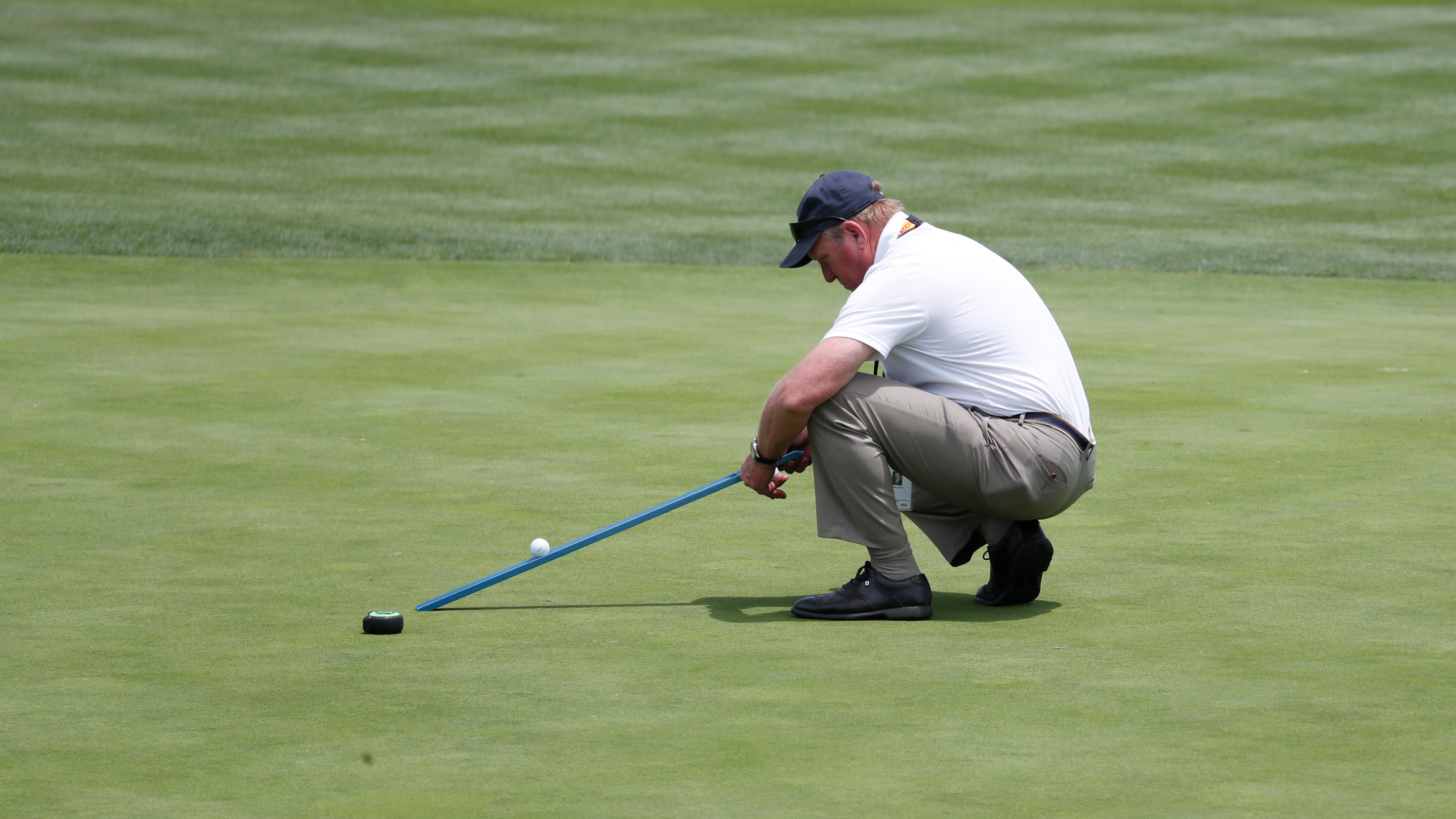How Is Course Rating Calculated?
Course Rating is a key number in the World Handicap System but what exactly is it and how is it worked out?


In this article we consider Course Rating and Bogey Rating and how these are fundamental numbers within the World Handicap System (WHS.) The Course and Bogey Rating are used to calculate a course’s Slope Rating which will determine what a player’s Course Handicap will be on any given course, off any given set of tees.
What is Course Rating?
The Course Rating is the evaluation of the playing difficulty of a golf course for the scratch player (0 handicap.) It is used in conjunction with the Bogey Rating, (the difficulty of the course for a bogey player of 20-24 handicap) to determine the Slope Rating. The Slope Rating will determine a player’s Course Handicap.
How is Course Rating Calculated?
Course Rating and Bogey Rating are calculated using the USGA Course Rating System. The Course Rating System is extremely objective and takes into account all the factors that affect the playing difficulty of a course. It requires numerous specific measurements to be taken on each hole of the golf course assisting in the consistency of application by course rating teams.
The Course Rating System Guide that all Course Rating teams will use when rating a course extends to some 45 pages and is extremely comprehensive. Course rating teams consider more than 460 variables on a standard course rating, from each set of tees.
The USGA Course Rating System takes into account: the actual measured length of a golf course, factors that can affect the playing length of the course and other challenges that influence the playing difficulty of each hole (obstacle factors).
The factors that can affect the effective playing length of a golf course are:
Roll – How far a ball will roll on fairways with various surface conditions/contouring
Get the Golf Monthly Newsletter
Subscribe to the Golf Monthly newsletter to stay up to date with all the latest tour news, equipment news, reviews, head-to-heads and buyer’s guides from our team of experienced experts.
Dogleg – Where the dogleg design of a hole does not allow a full tee shot to be played
Wind – Average wind strength and direction
Elevation – Difference in elevation between the tee and green and approach shots to the green
Forced Lay-up – Where a player is forced to play short of obstacles that cross the fairway
The 10 obstacle factors that are used to determine the playing difficulty of a golf course are:
Topography – Nature of the stance and lie within each landing zone and approach shot elevation to the green
Fairway – The width of fairway landing zones, hole length and nearby obstacles – trees, hazards and punitive rough
Green Target – Evaluation of hitting the green with the approach shot, visibility and nature of the green surface
Recoverability and Rough – The difficulty of recovery if the tee shot landing zones and/or the green is missed
Bunkers – Size and depth of bunkers and their proximity to landing zones and greens
Crossing Obstacle – Shot length to safely carry water, penalty areas, OB or extreme rough.
Lateral Obstacle – Takes account of the distance of obstacles from the centre of fairways and greens.
Trees – Size and density, proximity to centre of landing zones/greens, shot length to target areas, recovery difficulty
Green Surface – Putting difficulty on a green – green speeds, surface contours and tiers
Psychological – Evaluation of the cumulative effect of the other nine obstacle factors
The Course Rating System also provides procedures for determining a Bogey Rating based on expected performance of a bogey player (a player with a 20-24 handicap). The difference between the calculated Course Rating and Bogey Rating is used to calculate the Slope Rating. Slope Ratings vary from 55 to 155 with a course of standard relative difficulty rated at 113.
How Does Course Rating Affect Handicap?
Course Rating and Slope Rating affect Course Handicap. Each player with a WHS Handicap Index will play off a different Course Handicap at different venues, and off different tees, depending on the Slope Rating. Course Handicap is calculated by dividing Slope Rating by 113 and multiplying by Handicap Index.
What is the Average Course Rating?
There’s not really such a thing as an average Course Rating but there is an average, or standard, Slope Rating – the difference between Course Rating and Bogey Rating multiplied by a predetermined value – The average or standard Slope Rating is 113.

Fergus is Golf Monthly's resident expert on the history of the game and has written extensively on that subject. He has also worked with Golf Monthly to produce a podcast series. Called 18 Majors: The Golf History Show it offers new and in-depth perspectives on some of the most important moments in golf's long history. You can find all the details about it here.
He is a golf obsessive and 1-handicapper. Growing up in the North East of Scotland, golf runs through his veins and his passion for the sport was bolstered during his time at St Andrews university studying history. He went on to earn a post graduate diploma from the London School of Journalism. Fergus has worked for Golf Monthly since 2004 and has written two books on the game; "Great Golf Debates" together with Jezz Ellwood of Golf Monthly and the history section of "The Ultimate Golf Book" together with Neil Tappin , also of Golf Monthly.
Fergus once shanked a ball from just over Granny Clark's Wynd on the 18th of the Old Course that struck the St Andrews Golf Club and rebounded into the Valley of Sin, from where he saved par. Who says there's no golfing god?
-
 JM Eagle LA Championship Prize Money Payout 2025
JM Eagle LA Championship Prize Money Payout 2025The LPGA Tour heads to California for the JM Eagle LA Championship, where the largest prize money payout of the season so far is on the table
By Mike Hall
-
 Corales Puntacana Championship Prize Money Payout 2025
Corales Puntacana Championship Prize Money Payout 2025The PGA Tour’s latest opposite field event features an attractive prize money payout and some former champions in the field
By Mike Hall